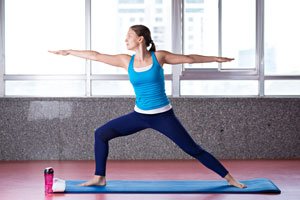What does the plyometric advantage mean?
Dustin Henkelman, Exercise Coach
CentraCare Weight Management
 Plyometrics are a popular training technique used by many athletic coaches. It is not new by any means — in fact it’s been around for many years. Plyometrics is essentially any training that allows an individual to take advantage of the “stretch-shorten” cycle to produce an explosive movement. I, myself, define it as a bridge to the gap between sheer strength and power. I will explain this later on.
Plyometrics are a popular training technique used by many athletic coaches. It is not new by any means — in fact it’s been around for many years. Plyometrics is essentially any training that allows an individual to take advantage of the “stretch-shorten” cycle to produce an explosive movement. I, myself, define it as a bridge to the gap between sheer strength and power. I will explain this later on.
Let me start by explaining the “stretch-shorten” cycle mentioned above. The stretch reflex causes a muscle to contract when it is stretched and inhibits the antagonist muscle from contracting (think of the doctor using the mallet to test your reflexes).
When a muscle stretches, it results in the activation of the sensory spindle receptors in the muscle. The spindle receptors lie within the body of the muscle. They are not only sensitive to the muscle being stretched, but also the speed at which it is being stretched. From there, the message is sent to the spinal cord via a synaptic junction which causes the motor horn cells in the spinal cord to act on the information.
To protect the muscle from being over-stretched, the motor horn cells react by contracting the muscle that is being stretched and inhibiting the contraction of the antagonist muscle. In other words, we can train our “muscles” to react to the eccentric phase by using the antagonist (opposing) to start the concentric phase. The concentric contraction must take place immediately after being stretched or the tension created dissipates as heat.
The easiest “everyday” example would be bending down before jumping which allows the quadriceps to be stretched eccentrically so that the following concentric contraction will be stronger. Studies have shown that the faster a muscle is stretched eccentrically, the greater the force will be on the following concentric contraction. This is the principle in which plyometric training was designed.
So why would I define all of this as the bridge between sheer strength and power? Think about how many injuries you’ve heard about in the past year that were “non-contact.” Why do you suppose there are so many “non-contact” injuries that are so serious these days? Here’s my suggestion. Today's athletes have the knowledge and strength training regimens, along with equipment to build muscle strength in a much faster manner than previous generations.
As muscles get stronger, what happens to the supporting muscles and tendons and ligaments? My philosophy is that they don’t keep up with the sheer muscle strength and that is what leads to many of the injuries we see currently. Plyometrics works on the “natural reflex” that can help avoid such injuries. They also work on lateral movements and strengthening many of the “smaller” stabilizing muscles.
Our Sports Performance packages at Lifestyle Health use this principle to train athletes.